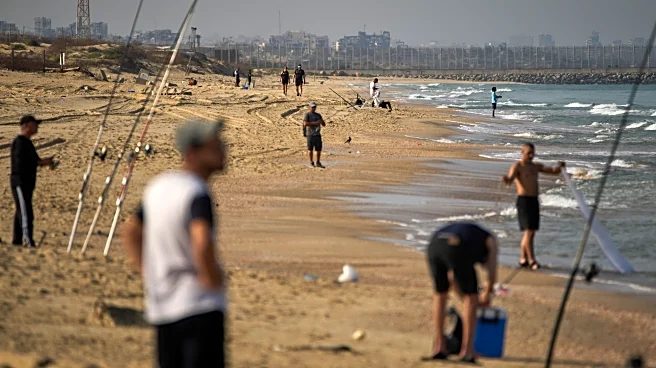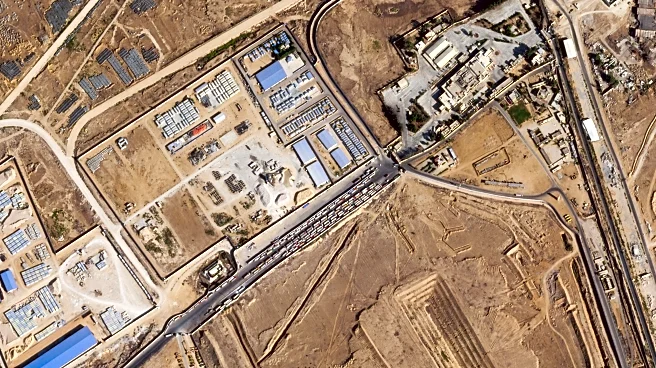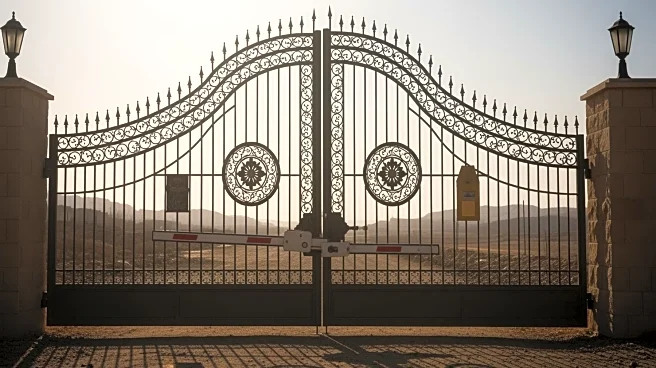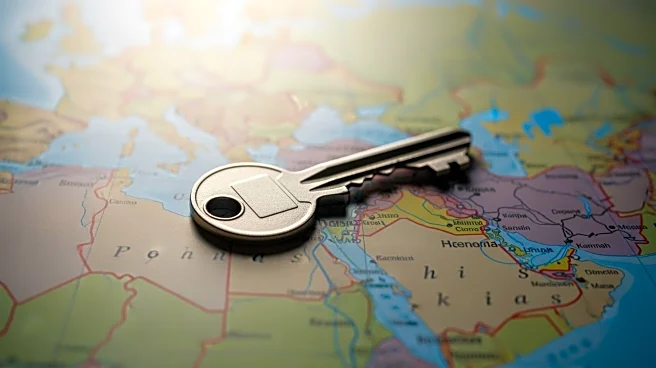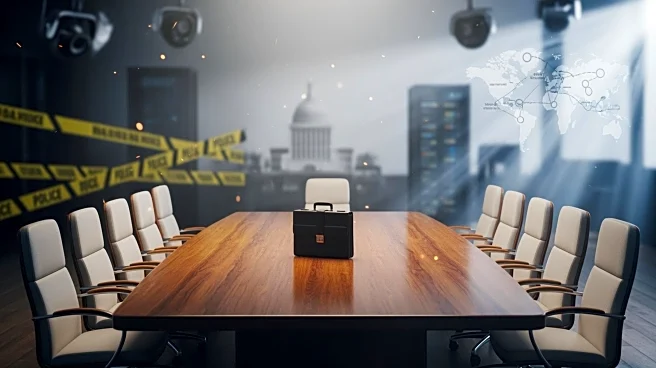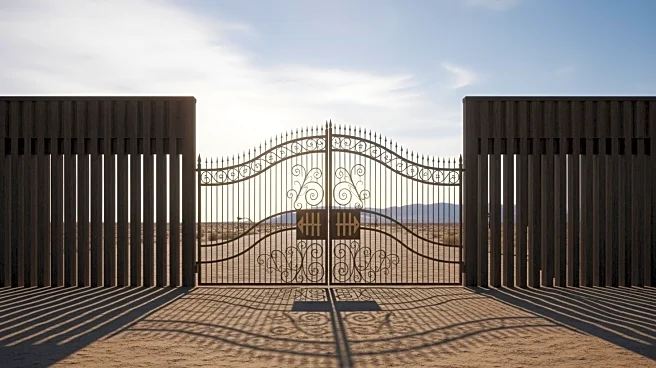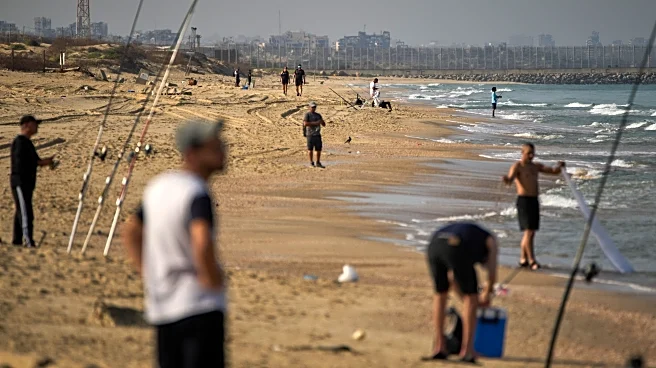What's Happening?
Clashes erupted in southern Gaza after gunfire was directed at an Israel Defense Forces (IDF) engineering vehicle near Rafah, despite a ceasefire agreement in place. In response, the Israeli Air Force conducted strikes in the area, and Israeli Navy vessels
fired towards the Rafah coastline. This incident prompted Prime Minister Benjamin Netanyahu, Defense Minister Israel Katz, and the military secretary to leave a Cabinet meeting for an urgent security assessment. The government also approved renaming the ongoing campaign to the 'War of Revival.' The escalation follows a fragile calm after the ceasefire agreement between Israel and Hamas. Previously, armed Hamas terrorists breached the ceasefire by emerging from tunnels and attacking Israeli troops, leading to Israeli airstrikes that killed several terrorists. The IDF has been operating under strict rules of engagement, allowing fire only in immediate threat situations.
Why It's Important?
The renewed violence in Gaza highlights the fragility of the ceasefire agreement and the ongoing tensions between Israel and Hamas. The situation poses significant security challenges for Israel, as about 7,000 Hamas operatives have redeployed throughout the Gaza Strip, reasserting control over areas as civilians return. The incident underscores the complexities of maintaining peace and the potential for further escalation, which could impact regional stability. Israeli political leaders have expressed strong reactions, with calls for a full resumption of fighting, reflecting internal pressures on the government to respond decisively. The situation also involves international dimensions, as any changes to humanitarian aid deliveries require U.S. approval, given Washington's role in mediating the ceasefire and efforts to recover Israeli hostages.
What's Next?
Following the incident, Israeli officials are considering whether to resume limited airstrikes against Hamas targets and reduce humanitarian aid entering Gaza. These decisions will require careful consideration of international diplomatic implications, particularly with the U.S. involved in the ceasefire mediation. The Israeli government faces pressure from political leaders to take a stronger stance against Hamas, which could lead to further military actions. The situation remains fluid, with potential for further clashes and adjustments to the ceasefire terms, depending on developments on the ground and diplomatic negotiations.
Beyond the Headlines
The ongoing conflict in Gaza raises broader ethical and humanitarian concerns, particularly regarding the impact on civilians and the region's long-term stability. The repeated cycles of violence and ceasefires highlight the challenges of achieving a lasting peace agreement. The situation also reflects the broader geopolitical dynamics in the Middle East, with various regional and international actors influencing the conflict's trajectory. The humanitarian situation in Gaza remains dire, with potential reductions in aid exacerbating the plight of civilians caught in the crossfire.



